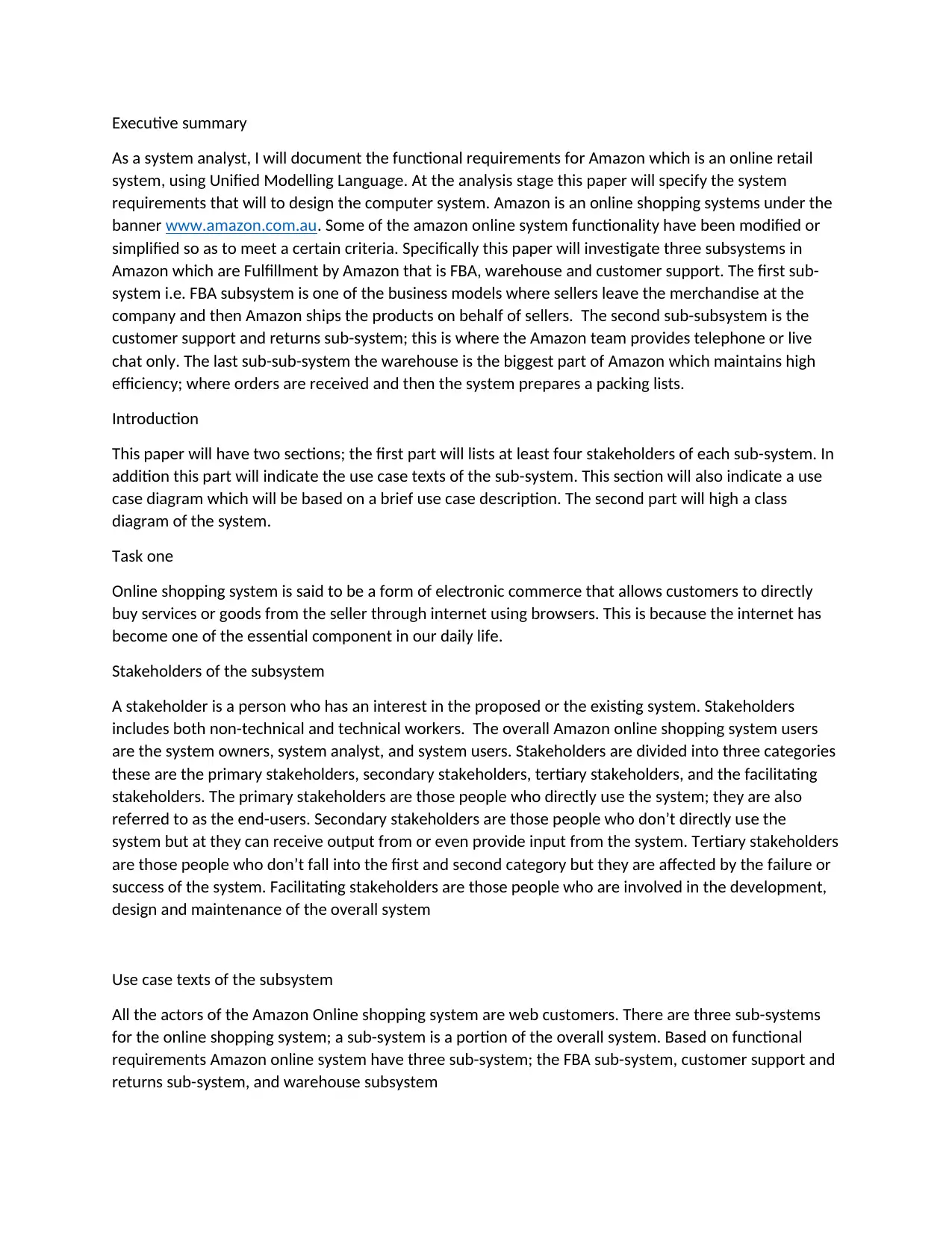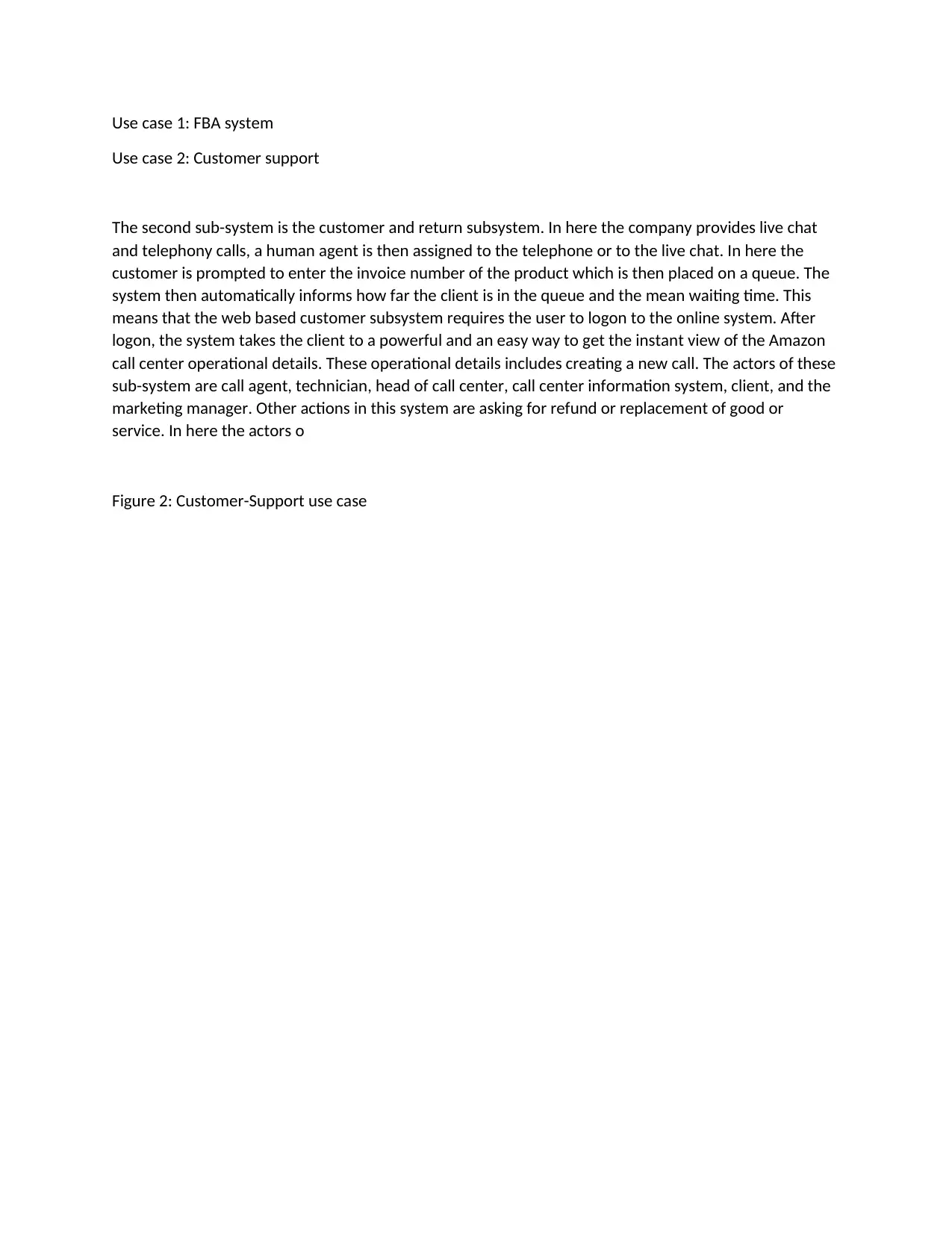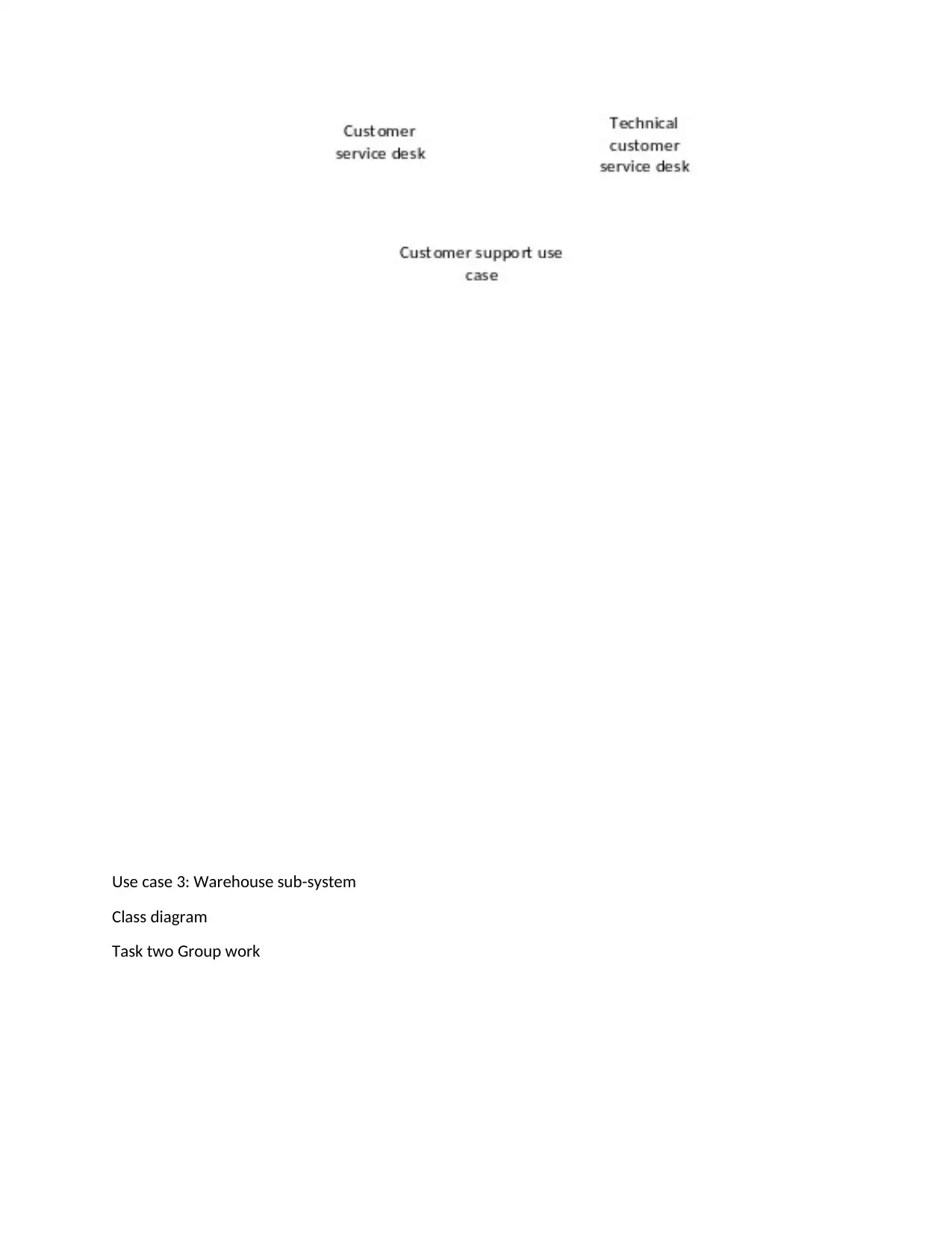Report: Functional Requirements Analysis for Amazon Online System
VerifiedAdded on 2023/01/23
|3
|742
|84
Report
AI Summary
This report provides a detailed analysis of the functional requirements for Amazon's online retail system, focusing on three key subsystems: Fulfillment by Amazon (FBA), customer support and returns, and the warehouse. The analysis utilizes Unified Modeling Language (UML) to document these requirements. The report identifies stakeholders for each subsystem and presents use case texts and diagrams to illustrate system functionality. The FBA subsystem is examined in terms of its role in product shipping, while the customer support subsystem's processes for live chat and telephone support are outlined, including the queuing system. The warehouse subsystem, responsible for order processing and packing, is also analyzed. The report concludes with a class diagram representing the structure of the system. This report is a comprehensive analysis, which is a part of a group work.
1 out of 3










![[object Object]](/_next/static/media/star-bottom.7253800d.svg)